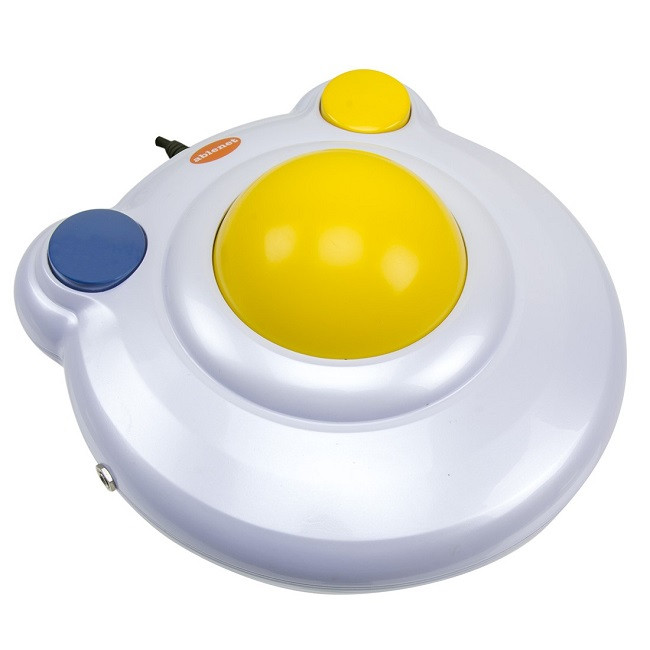2019 Jun 13
The history of personal computers is inevitably linked to input devices. At the beginning, in the seventies, there was the electronic keyboard, but soon many other ways to enter data in the computer followed. It was the eclosion of a myriad of input peripherals, gadgets specifically designed to aid the Human-Computer Interaction (HCI).
But, what about disabled computer users? Are these input devices suitable for them? As we will see, many of these devices have been designed with universal accessibility criteria in mind. Also, there exist many adapted devices specifically designed for persons with disabilities.
I will distinguish between the classical “computer”, like your desktop or laptop computer, and the “mobile device”, like your smartphone or tablet. Hence, the most popular input devices for the computer are the mouse, joystick, scanner, microphone, webcam, digitizer (digital pencil), or the MIDI standard for musical instruments. But then, by the mid-2000s, it arrived the now omnipresent touchscreen, bringing a huge change in the way we interact with smartphones and tablets.
It is very likely that the world continues to use both computers and mobile devices in the foreseeable future. Why is that? Mostly because the former is best suited for intense work or school tasks, the latter being great for leisure or small activities on-the-go. Anyway, the dividing line is becoming increasingly blurred…
Adapted keyboard
Even the humble mechanical keyboard has seen numerous improvements for persons with a physical disability, limited dexterity, tremor, Repetitive Strain Injury (RSI), Carpal Tunnel Syndrome (CTS) or any other physical or neurological condition. Among others, the interested reader should look into these product categories:
- Keyboards with “key guards”, that is, a plastic or metal cover fitting on top of the keyboard. As low-tech as it may seem, key guards are an effective means to improve the accessibility of a keyboard.
- Keyboard with bigger keys, useful also for persons with a visual impairment. For instance, BigKeys is a manufacturer of push-button keyboards with bigger keys, where each key is more than twice the surface of a regular keyboard with text that is printed more than 10 times larger. No special software or drivers are required to run it.
- Compact or mini keyboards, smaller in size than a normal keyboard, easier to install on a wheelchair or constrained spaces. Also for people who type with one hand. For example, check out the Cherry G84.
- Numeric keypad, either with regular or big keys, like the Chester Numeric Keypad.
- Ergonomic keyboards for persons suffering from Carpal Tunnel Syndrome (CTS).
Most of the above keyboards will not need installing an special driver in your computer. For an interesting twist, this article explains how to pair a big keys keyboard with an iPad.
Adapted mouse, trackball and joystick
To put it simply, pointing devices are input devices that allow the user to “move” a visual pointer on screen, and also to click, double-click, scroll, drag & drop… Nowadays we can’t hardly imagine a computer without a graphical user interface and a pointing device, usually a mouse. Even Apple, who was reluctant to allow using iPad or iPhone devices with a mouse, has just announced support for it.
- Xbox Adaptive Controller is a singular product in several ways: it is affordable, it comes from Microsoft, a long-time respected manufacturer of ergonomic input devices, and is specifically designed for gamers with physical disabilities. Even so, it is a perfectly valid controller for other uses (not only games). The Xbox Adaptive Controller has large programmable buttons and connects to switches, buttons, brackets and external joysticks.
- Bigtrack is an USB mouse that includes a large trackball. It’s construction is robust, allowing the user to easily move and position the pointer with fine or gross motor movements of the hand, arm, or foot.
- Ultra Joystick, a compact, robust USB joystick specifically designed for operating with the user’s head or chin. Created by Pretorian, a well-known manufacturer of assistive input devices. Even though not inexpensive, they offer a broad range of adapted joysticks and trackballs. You can also check the devices by BJ Adaptaciones or Traxsys.
- Ergonomic mouse for persons suffering from Repetitive Strain Injury (RSI). Sometimes, simply changing the size, shape or weight of a mouse can make it accessible, more comfortable or easier to use. List of ergonomic mice in Ergonomic Trends.
Stay tuned for the second part of this article, where we will cover using switches to access to computers. Switch access is specifically indicated for persons with severe physical disabilities.


